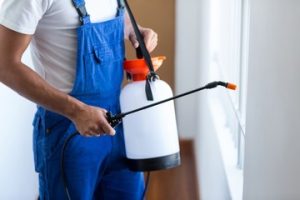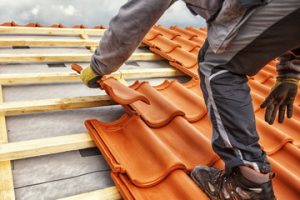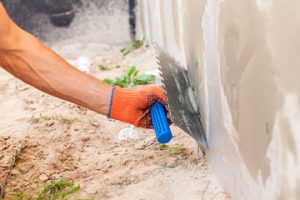Pest Control Trophy Club TX is a proactive approach to managing pests and ensures your space stays pest-free long term. It uses regular inspections and preventative measures to keep pests at bay.

It includes natural, biological, chemical, physical, and cultural methods to reduce or eliminate pests from a place without damaging their ecosystem. This is done through limiting access to environmental factors that support pest populations.
Identifying pests is one of the most important steps in any integrated pest management plan. Knowing what a particular pest looks like can help you make a more accurate diagnosis and determine the best way to manage it without using harmful chemicals. It is also useful for understanding how to prevent pests from returning once they have been managed.
Knowing how a pest reproduces, eats, and lives can allow you to take the necessary precautions to keep them away from your collections, people, and facilities. This helps you avoid the need to treat your items with harsh chemicals and can lead to more successful outcomes when a pest infestation occurs.
While pest identification can be difficult, there are a number of resources available that can help you get started. One helpful tool is ID Tools, an online resource that identifies pests based on their characteristics and habitats. The site also offers tips and tricks for identifying pests and includes information on their biology, behavior, and control methods.
Another great resource is the National Identification Services (NIS). NIS consists of botanists, entomologists, and malacologists who serve as the final taxonomic authorities for APHIS’ plant protection and quarantine programs. The service provides accurate, timely identifications that are used in decision making for the protection of our Nation’s crops and natural resources.
The museumPests Working Group has created a series of insect pest fact sheets that describe the common insects encountered in cultural heritage sites and how to distinguish them from each other. These fact sheets include images of the pests, descriptions of their life cycle, and suggestions for how to manage them.
In addition to the insect pest fact sheets, there are a number of other useful resources for identifying pests. These include the following:
It is important to be able to recognize your pests and learn how to prevent them from infesting your facility or collecting materials. Pests can cause a variety of problems including contaminating food, creating allergic reactions in humans, and damaging your collection materials. Pests can also be a health risk as they may carry bacteria, such as Salmonella or E. coli, which can be transmitted to humans through their feces or saliva.
Pest Prevention
Pest prevention is a proactive approach to stopping pests before they have the chance to invade homes and businesses. It involves a combination of preventive tips and treatments to keep pests away, such as trapping or removing the food, water, or shelter they need to survive. This method of pest control is sometimes referred to as integrated pest management (IPM).
Recognizing pest problems early is critical for successful preventative measures. Look for physical indicators, such as droppings or gnaw marks, and note any unusual behavior that might signal an infestation is underway. It is also helpful to learn about the pests themselves, including their life cycles and habits. Understanding what attracts them will help you create deterrents that they find less appealing. For example, ants are attracted to food spills and crumbs, so keeping kitchens and other dining areas clean will discourage them.
When a pest infestation has occurred, it is important to respond quickly to contain and eradicate the problem before it gets out of hand. Identify the pests and their damage, and be sure to document all sightings and indications of a problem. Recording the time, date, and location of a pest outbreak will make it easier to communicate these facts to your PCO and to identify effective control measures.
Ideally, the first step in responding to a pest infestation is to try non-chemical controls. These methods may include cultural (e.g., pulling out all brassicas during the month of July to disrupt the harlequin beetle life cycle) or physical/mechanical (e.g., using bug netting to cover plants). If these don’t work, then chemical control measures may be considered. However, pesticides should be used as a last resort when all other options are exhausted and should always be chosen carefully to reduce exposure to people, pets, wildlife, and beneficial insects.
To implement preventive measures, educate household members on the importance of cleaning and storing food properly to reduce attractants. Maintaining good housekeeping will also limit the likelihood of pest infestations, as a dirty environment provides more attractive hiding and breeding areas for rodents and cockroaches. In addition, reducing the availability of food sources will decrease their numbers and discourage pests. Finally, sealing entry points and removing clutter can help to prevent pests from making themselves at home inside buildings.
Pest Control Stores Near Me
Whether you’re dealing with pests inside or outside, Ace has the pest control products you need. Shop online for fast delivery to your door or find a store near you for in-person service and expert advice.
When it comes to controlling insects, prevention is key. Seal cracks and gaps around the home, keep trash cans closed and eliminate stray food or garbage to stop pests from finding their way inside. Use a garden spray to kill pesky weeds, or spray outdoor surfaces with a granular insecticide to create a barrier that keeps bugs away. Many pesticides are dangerous to children and pets, so be sure to read the product label and apply only as directed.
Rodents are another common household pest that can cause damage and pose health hazards if left uncontrolled. Using traps, repellents and bait stations is an effective and humane approach to rodent control. Look for traps from brands like Tomcat that include glue-based mouse traps, spring-loaded cat traps and other options to catch moles, gophers, squirrels, rats and mice. You’ll also find no-kill and catch-and-release animal repellents that help deter critters from your property.
Protect your family and pets with natural pesticides that are formulated without harsh chemicals. From plant-based repellents to organic sprays, these products can help keep insects and rodents away without harmful side effects.
Pest Control Services
Whether it’s a swarm of ants marching across your kitchen counter or rodent droppings in the attic, pest infestations can make any home or business feel uninhabitable. Unfortunately, trying to handle a pest problem on your own is time-consuming and often ineffective. Hiring a pest control service is the best way to eliminate pests and prevent them from returning for good.
Unlike store-bought products, pest control services offer targeted defense strategies for each type of pest. They start by identifying the pests and creating a treatment plan. Then they apply the appropriate pesticides to rid the property of pests. Many pest control companies also include ongoing maintenance to ensure that pests stay away for good.
Pests like cockroaches and rats pose serious health risks to humans. They spread diseases by carrying bacteria on their bodies and contaminating food and surfaces in homes. They can also trigger allergies and asthma in young children. Hiring a pest control company to administer routine treatments can help reduce these threats and protect the well-being of family members.
Professional pest control services can save you a lot of headaches and money in the long run. These experts have the skills and tools to deal with infestations quickly and effectively. Additionally, they can provide advice on how to keep pests away from the property in the future.
If you’re looking for a pest control company, consider those with a high customer satisfaction rating and positive reviews. Moreover, make sure that they offer guarantees and warranties. Also, ask about their pricing structures. Some pest control services are available on a subscription basis, which can be helpful for homeowners with recurring pest problems.


